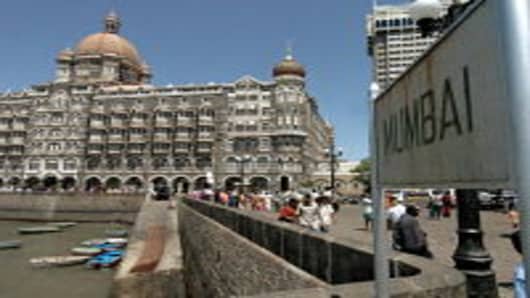India’s economy grew at its slowest pace in nine years over the first quarter of 2012 and inflation stayed stubbornly high at 7 percent, which say experts is pushing policymakers into a “stagflation” trap.
“Stagflation is going to persist for the next quarter or two as growth continues to remain sub-trend and inflation remains above-trend,” Taimur Baig, Chief Economist, Global Markets Research, Deutsche Bank told CNBC.
Baig forecasts inflation will accelerate to 7.5 percent and 7.8 percent in the second and third quarter driven largely by rising costs of importing fuel as a result of a weaker rupee.
On the growth side, the prospects for the economy, which grew at just 5.3 percent over January-March, are bleak with GDP expectations now under 7 percent for the current fiscal year that began April 1, as the government struggles to attract investments. For India, which expanded 8.4 percent in 2011, this is considered sub par.
The government has been baffling investors with several policy flip-flops. Last year the government cleared and then stalled foreign direct investment in multibrand retailing and early last month it postponed by a year the implementation of new rules cracking down on tax avoidance.
“With policy paralysis not likely to ease any time soon, India may have to settle for sub-par growth and elevated inflation over the next couple of years,” Leif Eskesen, Chief Economist for India & ASEAN at HSBC, said in a research note. He, however, does not think India's economy is experiencing stagflation at the moment.
But slowing GDP growth coupled with rising prices, gives little room for fiscal or monetary maneuvering. Add to this a ballooning budget deficit, which limits the government’s ability to implement new measures to kick-start the economy.
The government is under pressure to put its fiscal house in order and cut, for example subsidies on fuel. Besides political pressure not to do so, such a move also fans inflation.
In 2011, India spent $15 billion on fuel subsidies and this figure is forecast to rise to $18 billion this year, according to Baig. Without subsidies, he estimates diesel and kerosene prices could rise by 30-35 percent, and add 3-4 percent to inflation.
“The fact is that when going gets tough, you have to pay the price for economic mismanagement, but it is getting harder to do that. Pressure is rising to cut subsidies and to kick start structural reforms, but it’s going to be difficult to do because of political pressure and public opposition,” Ramya Suryanarayanan, Economist, Group Research, DBS Bank, said.
She adds that tackling lower growth via interest rate cuts will not work to stimulate the economy right now, as such a move would result in further weakening the Indian rupee which has already fallen to record lows against the U.S. dollar this year.
“Growth is weak and it’s going to stay weak. This trap that has emerged is because of slowing structural growth – a situation that can’t be dealt through rate cuts by the central bank,” said Suryanarayanan.
In April, the Reserve Bank of India (RBI) cut rates by an unexpectedly sharp 50 basis points as growth concerns took center stage.
Eskesen agrees that the central bank will have very limited room to ease monetary policy at its next meet on June 18. “The lingering inflation pressures suggest that monetary policy cannot be eased aggressively. Instead, traction on deep-rooted structural reforms is needed to significantly improve the inflation-growth trade-off,” he said.
By CNBC's Ansuya Harjani



